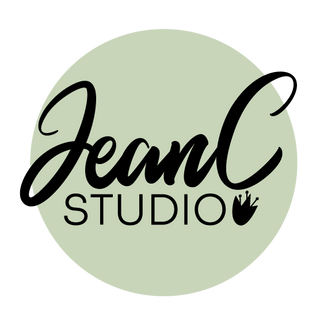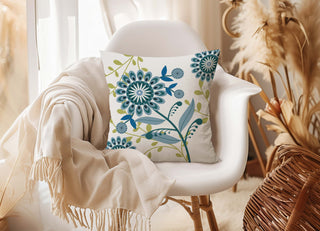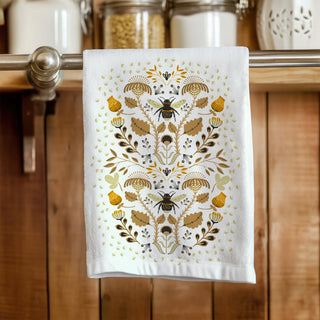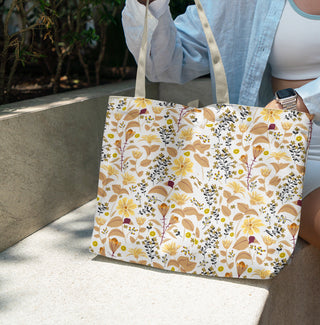When I create a botanical surface pattern design or illustration, the plants that inspire me are the ones I've planted in my own garden or ones that grow nearby. Nature inspired home decor is what I specialize in and it's what gives me the most pleasure.
I’m most comfortable when I choose subjects based on what I see and know. I never tire of using the plants I find in my garden as inspiration for my surface patterns and illustrations. They never outstay their welcome.
This doesn’t mean that my audience will always see the same coneflower illustrated the same way on each of my eco friendly home goods. My garden is a jumping off point for inspiration. The flowers in my garden and on my walks are just influencers!
The fact is, though, I can't improve on what nature has created. I can only interpret what I see. Looking at flowers, and weeds, too, I think, "Wow. They are designed so perfectly."
Yet, flowers evolved for their survival. Their brightly colored petals and aroma and the nectar they produce attract pollinators. Even their different shapes attract specific pollinators. For example, tubular flowers attract hummingbirds and flat, open arrangements of petals attract bees.
The Coneflower: A Bee Friendly Perennial
Take the Coneflower (also known as Echinacea) for example. This plant is a hardy as heck perennial that can survive heat, bad soil and little moisture. It’s a pollinator friendly plant that's really easy to grow. It's an eco-friendly plant with a capital E.

Coneflower (Echinacea)
I feature the Coneflower in a lot of my wallpapers, cotton linen blend throw pillow covers and cotton and hemp tea towels. You might not recognize the flower in my products at first, but that’s because I use artistic license to create a design that isn’t photographic reality. It’s an impression of the coneflower. My goal is to capture the essence of the flower or plant.

Lavender Coneflowers Organic Cotton Tote
Remember that taunt you might have heard in grade school? Your schoolmate gets his or her panties in a wad and yells, "Take a picture! It'll last longer!" My creative philosophy is that you either take a photo (realism) or you take creative license in illustrating your subject. (No offence to photographers!)
So, whether I hand draw the flower motifs or create them by using the software I have, that flower will never be a photographic duplicate of what appears in my garden or on my walks. And once I've created a design or illustration that I find pleasing, putting them on a home decor product is about as satisfying as cultivating the plant in my garden.
Tea Towels as Functional Art
I really enjoy designing patterns and illustrations for tea towels, partly because I love art that's also functional. These floral tea towels can brighten up a kitchen and perhaps make your chores there just a tiny bit more pleasant. Tea towels are part of my nature inspired home decor goods in my shop here. But before I continue, you might want to know what a tea towel is used for. Well, surprise! Look at this list of ways to use tea towels:
- Replace paper towels
- Wrap your herbs and veggies in a tea towel to keep them crisp
- Dampen and use them to cover dough while it's proofing
- Cover bread in a basket to keep it warm
- Spin salad greens and herbs - spin and twirl the towel around to get the moisture out
- Use them as oversized napkins
- Use them as a kitchen dishcloth, for general cleaning, or cleaning glass and computer monitors
- Wrap up gifts in them - called furoshiki wrapping (see below for more information)
- Make them into placemats, tote bags (see link below for tutorial)
Part of what makes the tea towels so useful are the fabrics I chose to offer them in. I'm so glad that I found eco friendly tea towels available to create designs for.
Fabrics I Use in My Tea Towels
Hemp
You might be surprised to find that tea towels can be made from the hemp plant. Here are some good things to know about hemp towels:
- Hemp towels have good absorbency, so they're good for drying dishes and wiping spills.
- Hemp is a very strong and durable material. It can withstand heavy use and multiple washes, making it a long-lasting option for your kitchen.
- Hemp is considered eco-friendly because it uses very little water during cultivation, it's resistant to pests, it has a shorter growth cycle than cotton, and it's biodegradable
Cotton Linen
As I mentioned in my previous blog post, cotton is also a very durable and absorbant fabric, so it makes for a wonderfully absorbant tea towel. Both linen and cotton fibers are known for their strength. And linen has excellent moisture-wicking properties.
Half Panama Cotton
Cotton Panama fabric is a versatile material known for its durability and strength. This fabric can withstand wear and tear. One of the most notable features of the Cotton Panama fabric is its unique plain weave pattern. The thicker yarns used in the weave give the fabric a slightly raised texture.
Inspiration is Right Outside My Door
My garden requires a lot of work but it also brings me so much joy. And it offers tons of inspiration that's close at hand. When I create patterns inspired by nature, I get to keep my flowers blooming all year round.
By creating home decor goods featuring my botanical art, I hope to bring nature indoors in my own special way. That's why my website is all about creating a path from the outdoor to the indoor you.
Resources
Pollination Mechanisms and Plant-Pollinator Relationships Candace Galen and Levi Storks, et al. March 2017
"What Kind of Fabric is Best for Furoshiki? A Guide to Eco-Friendly Materials"
DIY Dish Towel Tote Bag Abby Lawson April 2022
Cover Image of Hemp Seeds: y D-Kuru - Own work, CC BY-SA 3.0 at, https://commons.wikimedia.org/w/index.php?curid=4999101





